1970 is probably the best year for muscle cars – mainly because GM joined the fray by un-censoring displacement limits on its divisions. Also, the HEMI ‘Cuda and Challenger took the stage, completing a club of big-block weapons of mass destruction. Horsepower wars reached a peak, but the other brutal fight is often left out of stories about those times: the torque battles.
General Motors saw everyone else’s bets and raised the stakes to industrial levels of torque: the two (very) big-block engines from that year, the 454-CID and 455-cube (7.4 liters and 7.5 liters, respectively), were absolute archangels of crankshaft abuse. 500 lb-ft (678 Nm) of torque was a competition-crushing performance that only Cadillac dared to outgun.
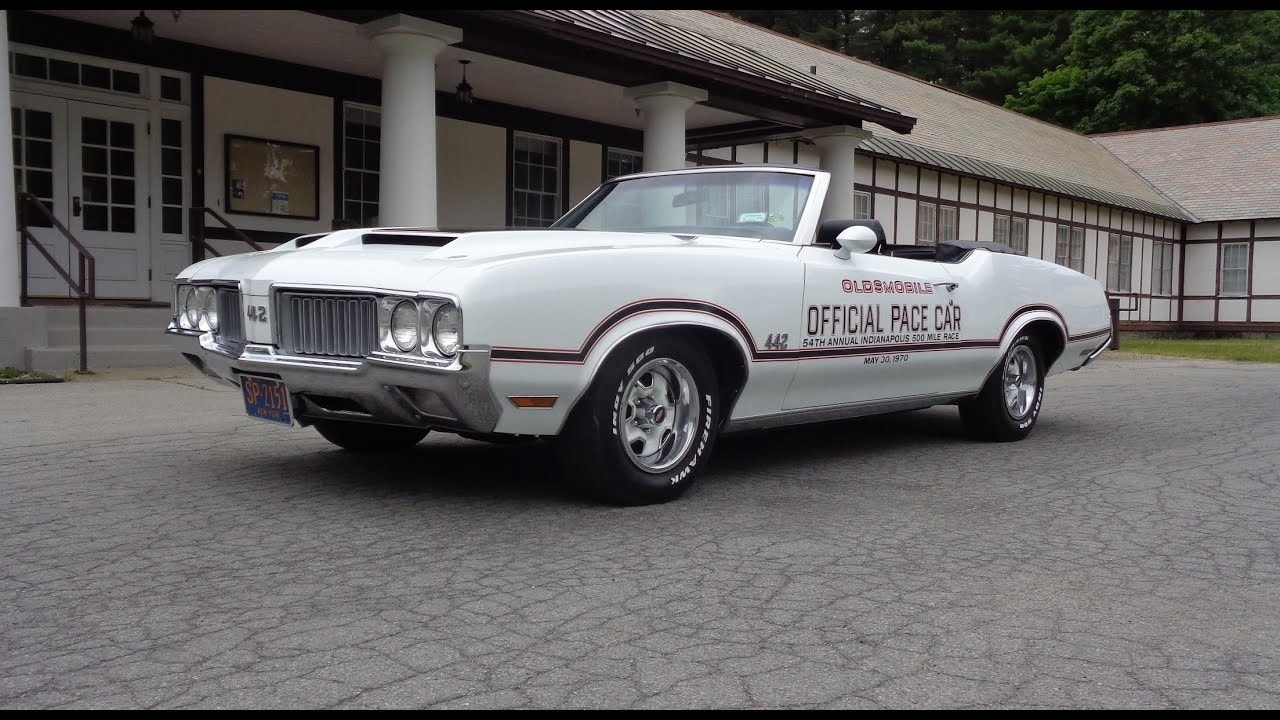
With that performance number in its pocket, GM wasn’t afraid to look down on everyone else – the Chevrolet 454 and Oldsmobile 455 were no joke. And that statement was quickly backed at the Indy 500 of that year – Oldsmobile had the honor of pacing the iconic race.

The automobile chosen for the high-speed gathering was a 442 convertible (in high-performance W-30 guise), and only 268 examples were assembled with the Y74 trim tag code indicating Indy 500 pedigree. Almost one in every eleven soft-top Olds 442 assembled during that model year production (the total number of ‘verts is 2,933).
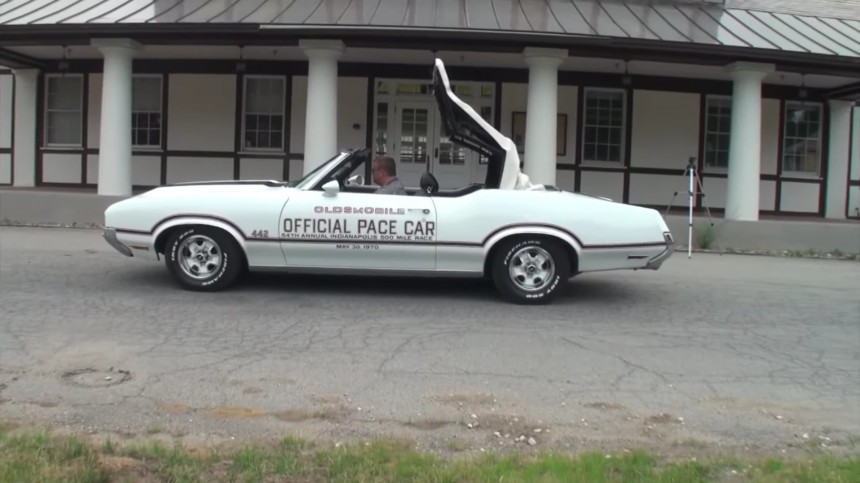
Photo: YouTube/Lou Costabile
This is where the 4-4-2 moniker gets a little off: while originally designating a Four-speed, Four-barrel, Two-exhaust architecture, the model also received automatic transmission. In fact, for 1970, most 442s were the two-pedal, self-shifting type: 2,336 came with the TurboHydramatic three-speed automatic with a stall-shift torque converter.
To give posterity something to think about, the 442 also had a very limited number of three-speed manual transmissions installed in 1970: 48, to be accurate. Regardless of what the discrepancies between a nameplate and a drivetrain might say, there is one special 442 out there with an extraordinary story – and it’s a rare Indy 500 pace car version.
The original owner met a five-year-old boy one day, and the curious – and starstruck – kid candidly asked if the car was for sale. Now, what do you say to a little man about as tall as your beltline when he comes and takes an interest in your muscle car? Many things might be considered a good answer, but here’s what fell from the Olds’ owner’s mouth: “Kid, stand in line.” Ruthless? Probably. True? Most definitely.
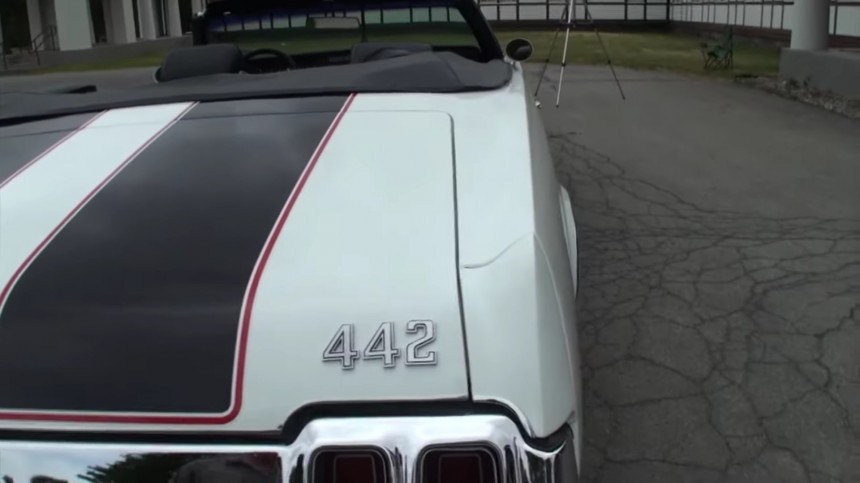
Photo: YouTube/Lou Costabile
The owner didn’t know that that five-year-old boy, Kevin Hedley, was actually a major gearhead. So serious that his interest in the 1970 Indy 500 pace car never faded. On the contrary, it only got more intense – and so did his questions about the car’s price and purchase availability.

But he always got the same treatment – until one day in 2008, when the persistent gearhead (now a grown man) finally struck a deal with the car’s owner and bought it. This is probably as close as anyone will ever get to meeting Santa Claus.
Fifteen years after that moment, Mr. Kevin Hedley still (very proudly) owns the car – watch his smile in Lou Costabile’s video as he plants a war-cry-shrieking burnout from the respectable 455-CID heavy artillery piece.
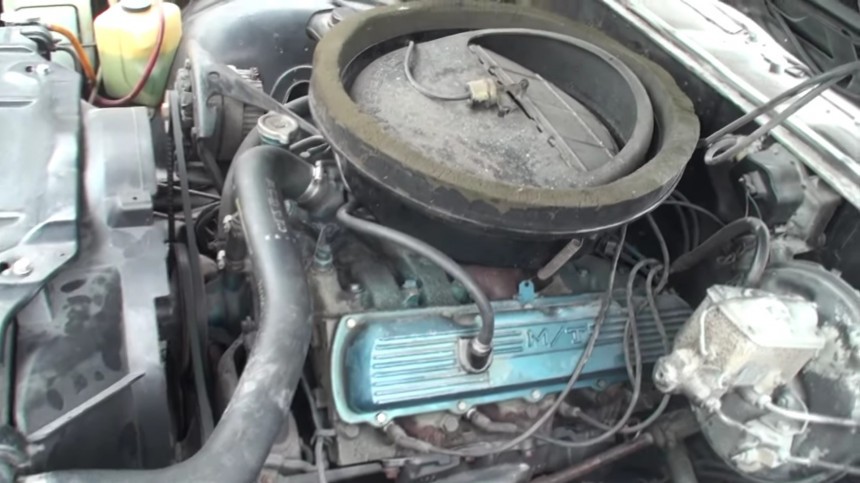
Photo: YouTube/Lou Costabile
Surprisingly, given its massive displacement, the 1970 big-block Oldsmobile motor wasn’t advertised as a horsepower freak and “only” produced 360 hp (365 PS). For comparison, the 454 from the same-year Chevrolet fired 450 hp (456 PS) – armed with the LS6 heavy-duty parts – and 390 hp (395 PS) in standard LS5 form.
Whatever the reason for this held-back power output, the Olds 442 wasn’t afraid to take on anyone – especially when equipped with the three-speed manual transmission (the fastest of the three Oldsmobile variants).
The example we can admire in this video has the run-of-the-mill automatic, but it still slams a smile on the faces of its driver and passenger. The owner points out that the car hasn’t lost a whisker of its coolness during its 53-year existence. As he recalls, he had a Ferrari owner pass him on the highway, then slow down and let the Olds get in line just so the Prancing Horse driver could snap photos of the stunning 1970 Oldsmobile 442.
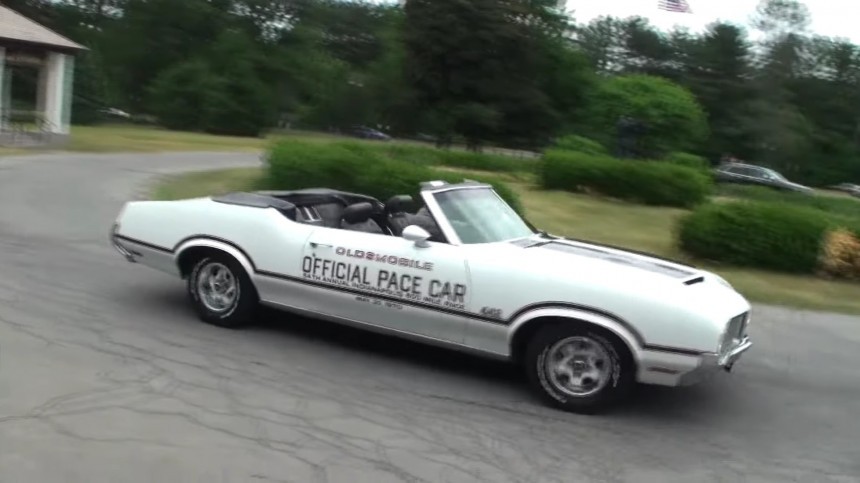
Photo: YouTube/Lou Costabile
Does it matter what model the Ferrari was? No, not at all – if an old Olds is getting attention from the one Ferrari owner’s club member, then the rest of Planet Piston can rest assured that the car is cool enough to freeze hell over. Twice.
A nice feature of this particular automobile is the reversed speedometer and gauge cluster – typically, the go-fast indicator sits in the center pod. Here, the engine stats instruments take the middle of the dash, while the speedometer is all the way to the left. The car has another unique detail in the cockpit – the back seat-mounted speaker.
As standard, the sound system would have a speaker in the well – where the top folds down – but it looks just in place as it is now. This particular car’s audio setup includes a reverb unit with an amplifier installed in the trunk and a foot-controlled 8-track.
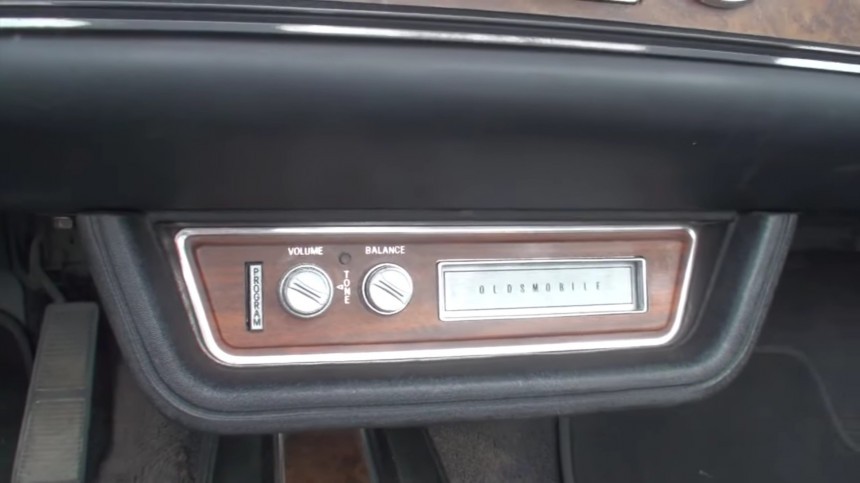
Photo: YouTube/Lou Costabile
On the driver’s left foot, there are two buttons: the outboard one is for the headlights – a switch for high beams – and the inner one is to change the tracks on the player. Hands down to GM engineers for this hands-free at its 1970 finest.

The car was repainted several years ago, and the Indy 500 door decals were added. Kevin Hedley left the engine – original to the car, if it needs to be said – untouched. The Mickey Thompson valve covers – correctly colored in the Oldsmobile blue hue – are an aftermarket add-on from the previous owner. Fun fact about this ’70 442: look at the odometer – it currently reads 70,464 miles (113,376 kilometers). That’s only a day’s drive away from the 70,442 mark that spells out the car’s make and model.